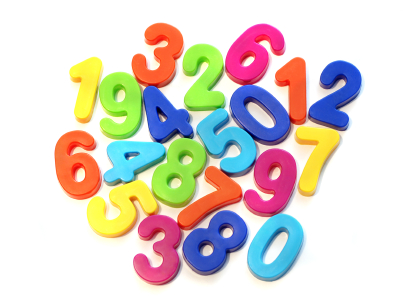 When it comes to writing numbers and numerals in your copy there are a few points you should consider.
When it comes to writing numbers and numerals in your copy there are a few points you should consider.
- Consistency: As is the case with all communications, the key is consistency. The best means of ensuring consistency is to make sure your rules and guidelines are written down in the corporate/house style guide. If you do not have a style guide then it may be worth keeping a style sheet for yourself so you can refer to it as required.If you are developing the company style guide, then the International Standard of Units should be your first reference point when considering numeric-heavy content. Alternatively you may use The Chicago Style Guide if you are in the US or perhaps, if you are a writer in the UK, The Cambridge Handbook for Editors, Authors and Publishers.
Use the Style Guide that is appropriate to your country and industry. I will write more about this next week. - Audience: Before committing your rules to a corporate style guide, make sure you have considered your audience. Are they technical, medical or scientific professionals who may be used to seeing numbers displayed in a certain way? Readability is one of the most important factors, so if you have to modify the rule slightly to suit the needs of your audience, then do it. As long as everyone else is doing the same and your stakeholders and creative team have signed off on the decision, consistency will reign supreme.
- Talking numbers: Write out numbers from one to nine. Numbers from 10 upward should be written as the numeral (eg, ’10’ instead of ‘ten’). Be consistent within a category. If you choose numerals because one of the numbers is greater than nine, use numerals for all numbers in that category. If you choose to spell out numbers because one of the numbers is a single digit, spell out all numbers in that category.
- Fractions: Always spell out simple fractions and use hyphens with them.– One-half of the cake was missing.
– A two-thirds majority is required before the school captain can be elected.Otherwise use numerals – 4 ¾. - Comma usage: In the UK, we generallyuse the comma as a thousands separator to make large numbers easier to read. However, in Europe the opposite is true. Full stops are used to separate large numbers and the comma is used for decimals. The International Systems of Units recommends that a space should be used to separate groups of three digits, and both the comma and the full stop should be used only to denote decimals (eg, £13 200,50).
- Never start a sentence with a numeral: This means you may have to rewrite your sentence. Instead of “500 jobs were created as a result of the increased funding”, you should rewrite your sentence to read, “As a result of increased funding, 500 jobs were created.”
- Two numbers next to each other: It can be confusing if you write “12 18-year-old cars”, so write one of them as a numeral, like “twelve 18-year-old cars”.
- Compare like with like: Do not compare a fraction with a decimal, so avoid mixing numbers like this
“Use the 7½” or the 20.8” tubing . . .” - Spacing: Insert a space between a number and a unit (11 am, 15 kg) but not between a number and
a symbol (15°, 5%). - Ranges: When writing ranges of large numbers, usually only the last two digits of the second number are required (eg, 115–25, 1950–70). The exception is where the first two numbers are different (eg, 1990–2012).
- Percent versus %: When it comes to deciding whether to use the symbol or whether to write percent out in full, you must first look at your audience. If you’re writing a technical or scientific document, then most sources recommend that you use the symbol. If you are writing something where numbers are used less often, then it is more common to write the word percent. Again, this will come down to house style so make a decision and stick with it.
OK, so you may have opted to use the % symbol instead of percent. But when it comes to the word ‘percentage‘, you must write this out in full. “A large percentage of the school have already had chickenpox”.
The rule for writing a number with the % symbol. If you have to use % in a sentence, you should use the numeral rather than spelling out the number. For example, write “I would say about 7% of the pens did not work”(so you can see I have used the numeral rather than write ‘seven %’ or ‘seven percent’). - Centuries and decades: Should be written out in full and in lower case – unless the word is part of a proper noun like 20th Century Fox.
- Ordinal numbers and consistency. Don’t say “It was my 1st job interview,” but rather “It was my first job interview.” Of course, be consistent within the same sentence.
From time-to-time I will update this post as I come across relevant examples. The most important point I can leave you with is consistency. I know I mention this ‘c’ word often in my posts, but it is fundamental to strong communications and a strong brand. I remember being told many years ago, ‘it doesn’t matter if you get it wrong, as long as you consistently get it wrong’. I say this tongue in cheek of course, but it illustrates the sentiment on consistency perfectly. You may think people don’t notice such small details, but if you have ever made even the smallest of grammatical slip ups in your career, you will find to your amazement, how many people notice. Of course, apart from the people who love to notice mistakes, there are people like me out there who can’t read a menu without scanning for typos. Numbers and numerals are just as important as words – so make them count.
Feel free to add comment or any questions you may have about how to write numbers in copy.
 Send to Kindle
Send to Kindle

